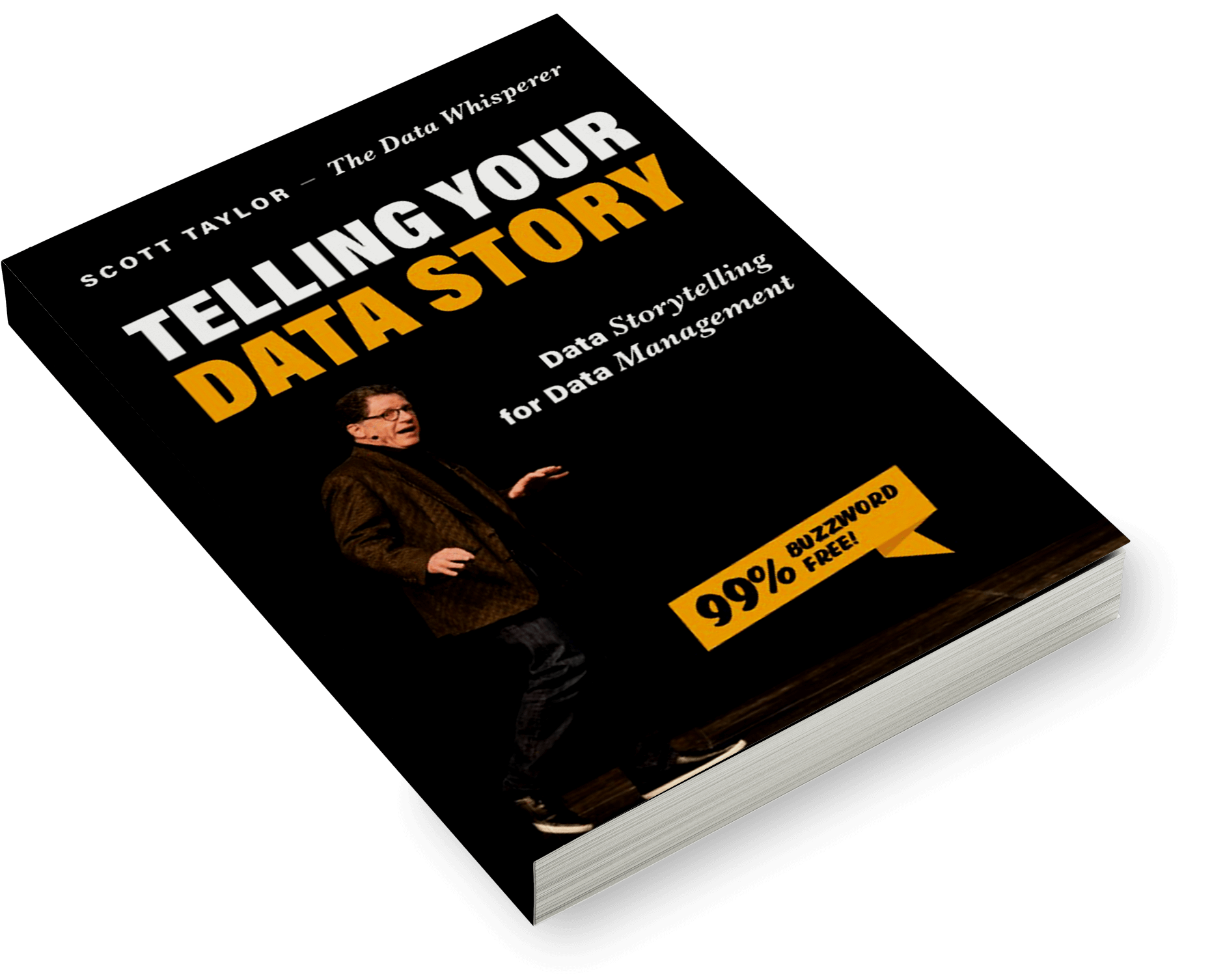To help BRIDGE THE STORY GAP between Data and The Business, we are excited to share excerpts from the book ‘TELLING YOUR DATA STORY – Data Storytelling for Data Management’ by our content partner, Scott Taylor, The Data Whisperer.
If you want to articulate the value of data for your organization, and you can’t express the WHY first, then the HOW will never matter.
Your data management data story begins with why your company exists. What does your business do? At its essence, every business wants to deliver value to their relationships through its brands at scale. Whether you are in banking or manufacturing or a media company or a digital startup, that is what you are trying to do. You have relationships, and you have brands. You want those brands to bring value to your relationships. That is the whole point of business.
Assessing Your Data Foundation
Now take that apart and ask: do we have the data behind those ideas? How good is the data you have for those relationships? Customer, vendor, partner, prospect, citizen, patient, consumer. On the brand side, it is a product, service, offering, banner, asset, or location. Those are all classic master data domains. So instead of saying, “we need to improve the quality of our customer and vendor master,” turn the conversation around. Focus on the initiatives you have in the organization to build and strengthen your relationships, transform your customer experience, or move to an as-a-service offering.
Gaining Executive Buy-In
These big ideas often require the approval of the executive team. As the data management leaders, you have to show that you need the data to back those up.
Do you want to transform your customer experience? Let’s talk about that. What does that mean to you? Better, deeper engagement? Predictive assortment? Dynamic pricing?
Whatever that means, there is a data piece to it. There is data on customers that probably is not very good because you have duplicates. There is data on brands and products that are spread all over the organization and incomplete. If the organization’s strategic intent is to grow through new transformational experiences, you cannot do it unless you have the data foundation.
From Features to Benefits
Most data management messaging focuses on features rather than benefits. Reduce duplicates, improve poor quality data, create a golden record, build a 360-view of the customer or product. Better decision-making, regulatory compliance, effective prioritization, increasing shareholder value—these are nice, but frankly, they can sound generic. Most business stakeholders don’t understand those root problems and don’t care about these features. They always have the same question:
Answering the Crucial Question: Why?
In his book, Start with Why, Simon Sinek states, “People don’t buy what you do; they buy why you do it.” Sinek didn’t come up with the idea of WHY, but he did a great job popularizing it. His audience is mostly consumer marketers and brands, but the same holds for enterprise leadership that needs to support the use of data. Although WHY is the most crucial question in business, data discussions at enterprises tend to be predominantly about the HOW: how something will be architected, how this API connects to that one, how it all works. When a business leader asks about why something will drive their business, the data person will invariably show them a massive architectural schematic, a bursting chrysanthemum visualization, or a dizzying array of flow diagrams – which rarely explains WHY.
Balancing the Conversation
There is a balance, but there is also an order. If you want to understand or articulate the value of data for your organization, and you can’t express the WHY first, then the HOW will never matter.
I have had CEOs interrupt me and ask, “why are you telling me this?” Beware of the most show-stopping question of all – Why should I care? If this happens to you, you better be ready with an answer.
Overcoming Frustration
If you are like most data leaders, you are frustrated that your management doesn’t understand. The industry analysts may confound you. Tool vendors and consultants may have burned you. You are sick of banging your head against the wall. And when your time finally comes to make your case, you blow it.
So, let us start over.
In part 5 of this series, we will share the 4Cs of structured data and why structured data works harder than unstructured data.

Excerpted with permission from Technics Publications from ‘TELLING YOUR DATA STORY – Data Storytelling for Data Management’ by Scott Taylor, The Data Whisperer & Infocepts Partner.
Recent Blogs

LLMs – Self-Hosting or APIs? The Million Dollar Question
April 16, 2025

Fashion Retail in the Age of AI: Redefining Design and Customer Experience with Data & Intelligence
April 11, 2025

Navigating the Tariff Shock: How AI and Advanced Analytics Fuel Supply Chain Resilience
April 7, 2025

From Data to Decisions: The Evolving Role of Data Science & AI in Supply Chain
March 20, 2025

